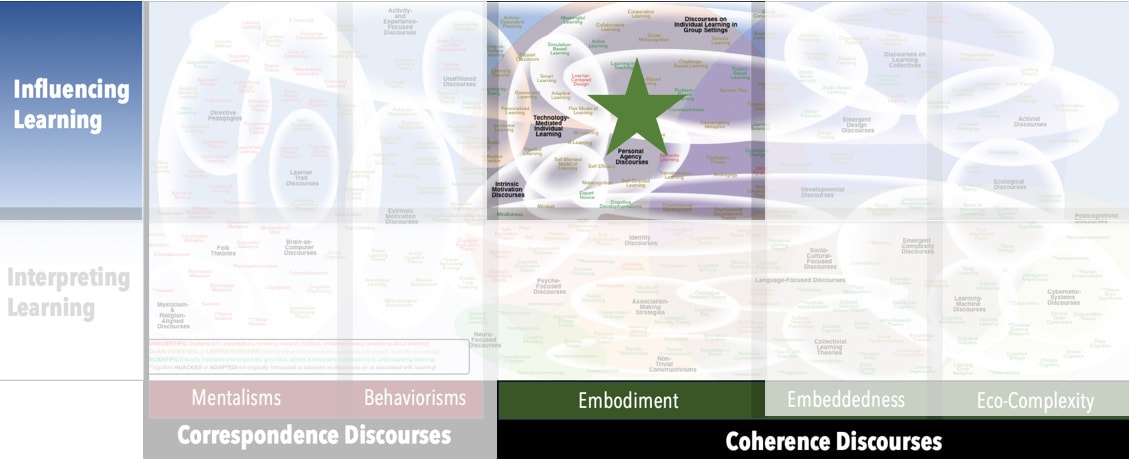Focus
Supporting rich and robust learning through active, sensorially diverse engagementsPrincipal Metaphors
- Knowledge is … the scope of possible action and interpretation
- Knowing is … doing, being
- Learner is … a perceiver/interpreter (individual)
- Learning is … creating; bringing forth (to meet to demands of a situation)
- Teaching is … designing
Originated
2000sSynopsis
Multisensory Learning begins with the awareness that concepts are distributed across entire networks that span multiple regions of the brain. That is, the brain integrates prompts from all sensory systems into already consolidated-but-ever-evolving concepts and protoconcepts. The advice of Multisensory Learning is thus to aim for a broad spectrum of active and sensorially diverse engagements when learning a concept. (For example, having students engaging in appropriate gestures when learning a new word or interpreting a mathematical form can positively effect learning.) Interest in Multisensory Learning is well-established, tracing back to discourses that include:- Behavioural Optometry (Developmental Optometry) (William Bates, 1920s) – a program for addressing well-being and supporting learning via improving vision through eye-training exercises and attending to self-care. Behavioural Optometry is built on a recognition that vision issues can be implicated in learning difficulties.
- Fernald Method (VAKT) (Grace Fernald, 1930s) – an approach to the teaching of reading that is deliberately attentive to visual, auditory, kinesthetic, and tactile senses (hence, VAKT)
Commentary
Multisensory Learning is often confused or conflated with Learning Styles Theories, but they are profoundly different. As Correspondence Discourses, Learning Styles Theories assume uncritically that learning is about “taking things in” and see the senses as portals for the flow of those things. (Hence the advice to focus on preferred portals.) In contrast, as a Coherence Discourses, Multisensory Learning attends to broad and varied body-based experiences out of which learners continuously construe coherent understandings of their worlds. Consequently, although appearing superficially similar, it offers much different teaching advice.Authors and/or Prominent Influences
DiffuseStatus as a Theory of Learning
Multisensory Learning offers no new insights into the complex dynamics of learning.Status as a Theory of Teaching
Multisensory Learning is principally concerned with offering advice to educators on structures and tactics that are highly effective in promoting the learning of pre-selected topics. One of the perhaps-surprising (and somewhat contested) insights is that systematic direct instruction may be one of the most powerful modes of teaching, owing to the manner it can be used to structure learner noticing and action.Status as a Scientific Theory
Multisensory Learning is attentive is based on well researched theories such as Embodied Cognition, and it attends closely to developments in Cognitive Science and Neuroscience. As well, although fairly “young,” it is associated with a robust and growing research base.Subdiscourses:
- Behavioural Optometry (Developmental Optometry)
- Fernald Method (VAKT)
Map Location

Please cite this article as:
Davis, B., & Francis, K. (2023). “Multisensory Learning” in Discourses on Learning in Education. https://learningdiscourses.com.
⇦ Back to Map
⇦ Back to List
